
The touchpad is an age-old feature, having long since replaced the “pointing stick” (or what I liked to call the “nipple”) as the standardized alternative to mouse control on a laptop. But with the issue of the touchpad not working on a laptop while you’re on the move, or in another situation where you don’t have a spare mouse handy, you can end up stranded.
Don’t start training yourself to use Windows with only a keyboard just yet. Check out these tips to fix a malfunctioning touchpad (starting with the simplest).
Note: you’ll need an external mouse or touchscreen to go through some of these tips. Also, the following fixes are for laptops running Windows OS, but we can help you fix trackpad problems on macOS and Linux, too.
Tip: facing touchpad issues on Linux? Learn how to fix a touchpad not working on Linux.
- 1. Turn on Touchpad in Settings
- 2. Re-enable Your Touchpad Using the "Fn" Key
- 3. HP Touchpad Not Working
- 4. Disconnect External Mouse
- 5. TouchPad Disable Zone
- 6. Is the Trackpad Disabled in the BIOS?
- 7. Remove Other Mouse Drivers
- 8. Update or Roll Back Touchpad Driver
- 9. Enable Your Touchpad in Mouse Properties
- 10. Disable Tablet PC Input Service
1. Turn on Touchpad in Settings
It may seem obvious, but there’s a possibility that your touchpad isn’t switched on within Windows settings. (This could have happened when you connected an external mouse, for example.) Luckily, Windows laptops have a dedicated Touchpad setting hidden away in the Windows Settings app.
To enable your touchpad, press Win + I, click Bluetooth & devices, then scroll down, and click Touchpad. Make sure the Touchpad button is set to On. Also, make sure that the cursor speed isn’t set to 0 for some strange reason. Windows 10 users fill find the same settings under Settings -> Devices.
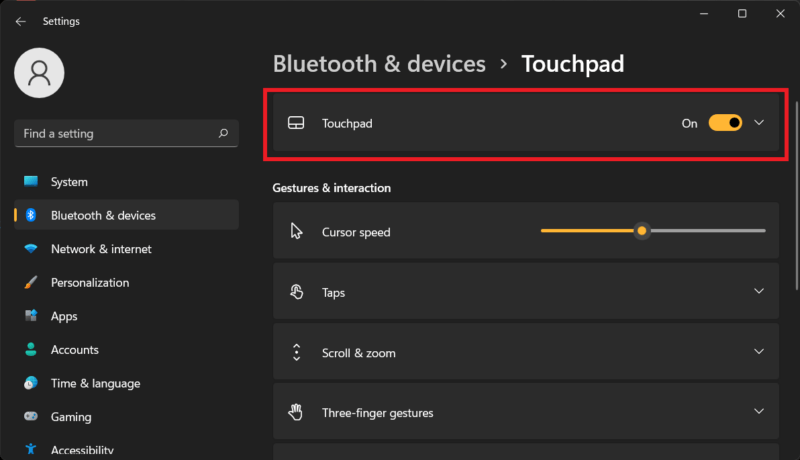
If the touchpad is still not working on your laptop, proceed to the fixes below.
2. Re-enable Your Touchpad Using the “Fn” Key
This happened to me several years ago. Perhaps, while trying to use the Fn key to change the volume on my laptop, I ended up with the touchpad not working on my laptop. For weeks, I didn’t know what the issue was, which wasn’t helped by the touchpad function icon on my keyboard looking just like a monitor icon. It took me a while to realize that maybe it was, in fact, a touchpad icon.
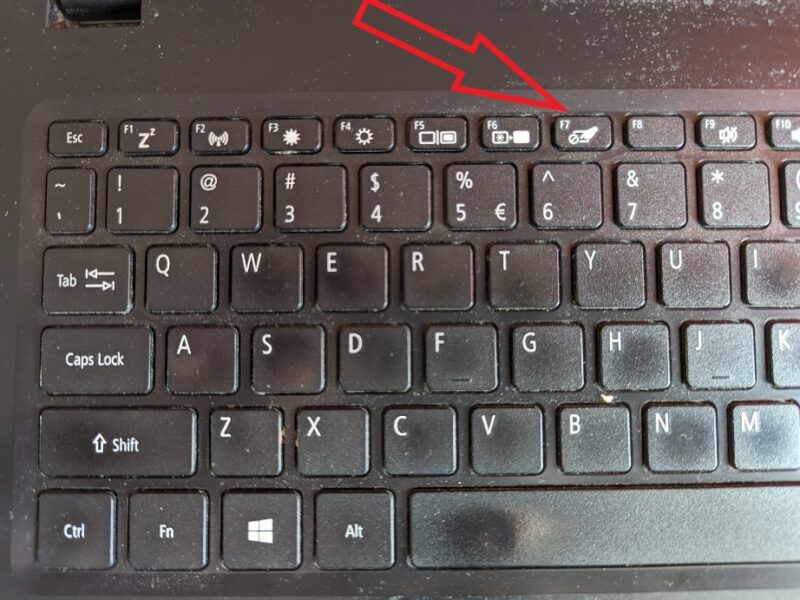
While holding the Fn key, press every function button (the F1 to F12 keys) with a symbol that looks like it could be your touchpad (F7 in my case) to see if it switches back on. (Bear in mind, you may turn off your screen this way, so just press that button again if that happens.)
3. HP Touchpad Not Working
There’s an issue that’s been specifically affecting HP laptop users on more recent versions of Windows. Some plucky users found that the problem stemmed from the serial IO drivers (that let the laptop communicate with external devices, including the touchpad), which were out of date.

You need to download and install the latest IO drivers first. To begin, go to the HP driver packs page to check which driver pack matches up with your HP laptop model. The drivers also need to match up with your Windows version (2004, 1909, etc.), which you can check by going to Settings -> System -> About, then scrolling down to Windows specifications.
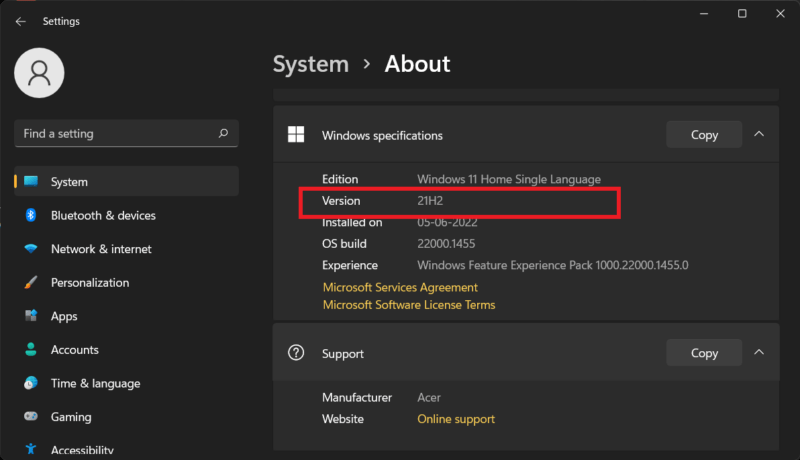
Once you’ve found the driver pack you need, you can either download it from the above link or go to the HP FTP server and get the correct drivers. (Sometimes the latest drivers appear here before they get to the HP support page.)
FYI: Need to troubleshoot or contact support? Find your laptop model number in Windows.
4. Disconnect External Mouse
It’s not super-common, but there are laptop models that automatically switch off your touchpad when you connect an external mouse. The solution in this case is simple: unplug the USB mouse, and turn off your Bluetooth mouse if you have one.
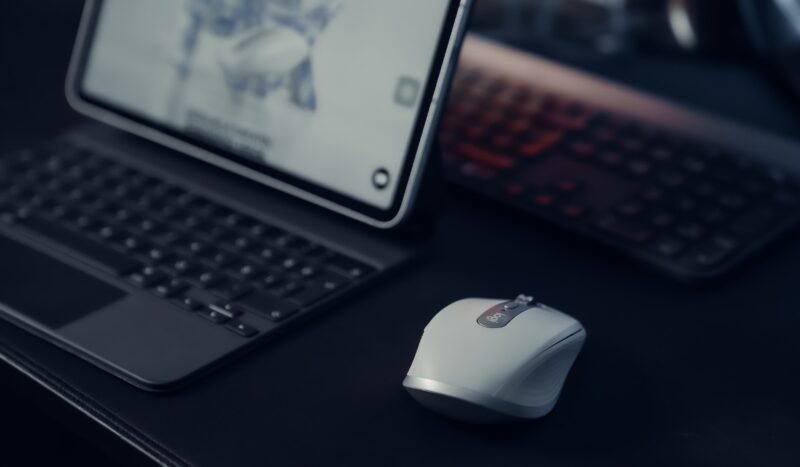
My Bluetooth mouse, for instance, doesn’t turn off automatically, so if it’s anywhere in the room – even in a drawer – it will “connect” to my PC. Be wary of that.
5. TouchPad Disable Zone
If that doesn’t fix the issue, there may be a small square logo in the top-left corner of your laptop touchpad. (HP Synaptics TouchPad laptops and some other models have this feature.) If you have this logo, double-tapping it enables and disables your touchpad, so there’s a chance that you disabled it accidentally.
Try double-tapping that logo to see if your touchpad comes back to life.
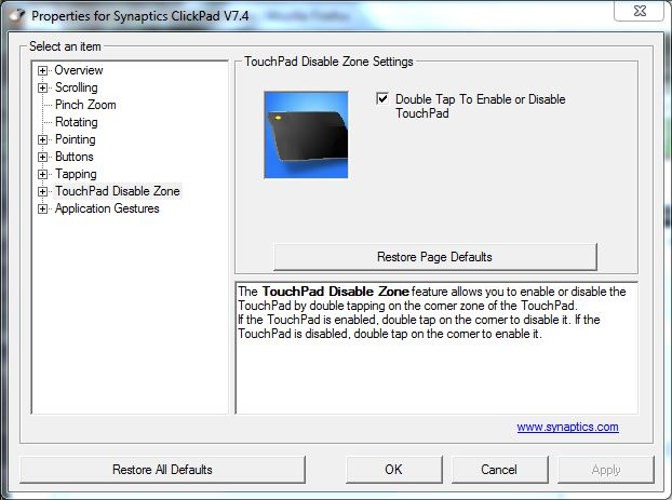
If you find yourself disabling your touchpad accidentally this way, you can disable this feature entirely by going to Settings -> Bluetooth & devices -> Touchpad -> More touchpad settings -> Touchpad Entry -> Settings -> TouchPad Disable Zone and unticking Double Tap to Disable Touchpad.
6. Is the Trackpad Disabled in the BIOS?
There’s a chance that, for reasons unknown, your laptop touchpad is disabled in the motherboard BIOS of your laptop. (This could happen after a firmware update, for example.)
To check whether this is the case, enter the BIOS by repeatedly pressing the Delete or F2 key as your PC is booting. (The button you need to press may vary.)
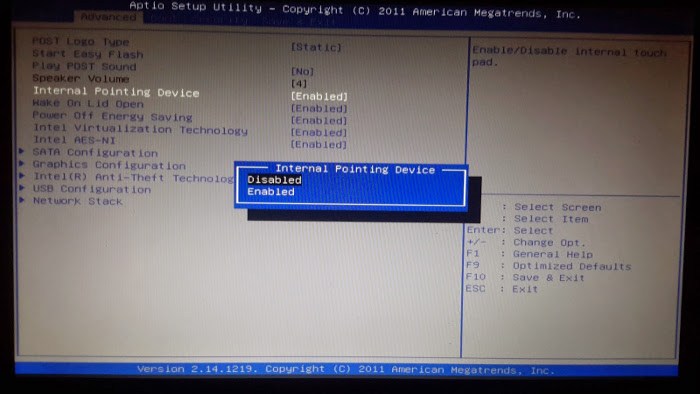
Likewise, the BIOS for different motherboards has a different layout, but your goal is to find the Internal Pointing Device option, or similar, then make sure it’s enabled. This may be under the Advanced heading if you have one. Once you’ve done this, select the Save Changes and Exit option.
7. Remove Other Mouse Drivers
Have you plugged a whole bunch of mice in to your laptop in the past and never removed their drivers? If so, there’s a chance their drivers are interfering with your touchpad. (Some mouse drivers even disable your touchpad automatically!)

Go to Device Manager, click the arrow next to Mice and other pointing devices, then right-click and uninstall the mice one by one until your touchpad starts working again.
8. Update or Roll Back Touchpad Driver
While you’re in Device Manager, right-click your touchpad in the list (it may be called Dell TouchPad, Lenovo TouchPad, Synaptics, or similar, depending on the brand of your PC), and make sure that it’s enabled. If it is, click Update Driver to see if there are any updates for it that will help.

Many people have reported that their touchpads stopped working properly after getting a new version of Windows, which means that the new driver for your touchpad may be misbehaving. In Device Manager, right-click your touchpad, then click Properties -> Driver -> Roll Back Driver to see whether a previous version of the driver fixes the problem.
9. Enable Your Touchpad in Mouse Properties
In many cases, Device Manager doesn’t handle the enabling and disabling of your touchpad. If, somehow, the touchpad is not working on your laptop, you’ll need to go to your Windows mouse properties to re-enable it.
Open Settings by pressing Win + I. Go to Bluetooth & devices -> Mouse -> Additional mouse settings. In the new window, click Device Settings, Touchpad, or whichever tab is at the far right of the window. Find your touchpad in the list, select it, then click Enable.
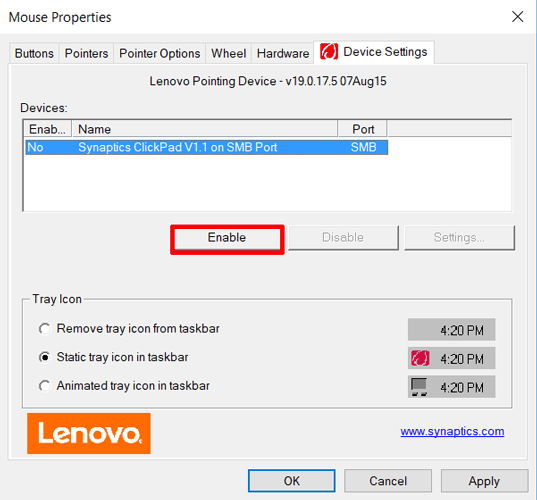
10. Disable Tablet PC Input Service
If your Windows laptop is a hybrid and has a touchscreen, there’s a possibility that Tablet PC Input Service, which controls stylus functionality, is interfering with your touchpad. If you don’t really use the stylus anyway, then it won’t be a big loss to disable it.
If you do use it, however, you have to decide whether you want to go through the inconvenience of toggling this service on and off each time you want to use your touchpad.

To disable Tablet PC Input Service, hit Win + R, type services.msc in the box, and press Enter. In the list of services, scroll down and click either TabletInputService or Tablet PC Input Service, then disable it.
Remember that different laptops may have different update driver software for their touchpads, so these instructions may vary slightly, but for the most part, they should point you in the right direction.
If it’s your laptop keyboard that’s not working, try these fixes to get it up and running in no time. If you’re facing slowdowns with your laptop, learn how to bring down 100% CPU usage in Windows. If you’ve recently updated Windows, it may be worth it to check out the latest Windows 10 and 11 update problems and how to fix them.
Image credit: Pixabay. All screenshots by Tanveer Singh.
Our latest tutorials delivered straight to your inbox